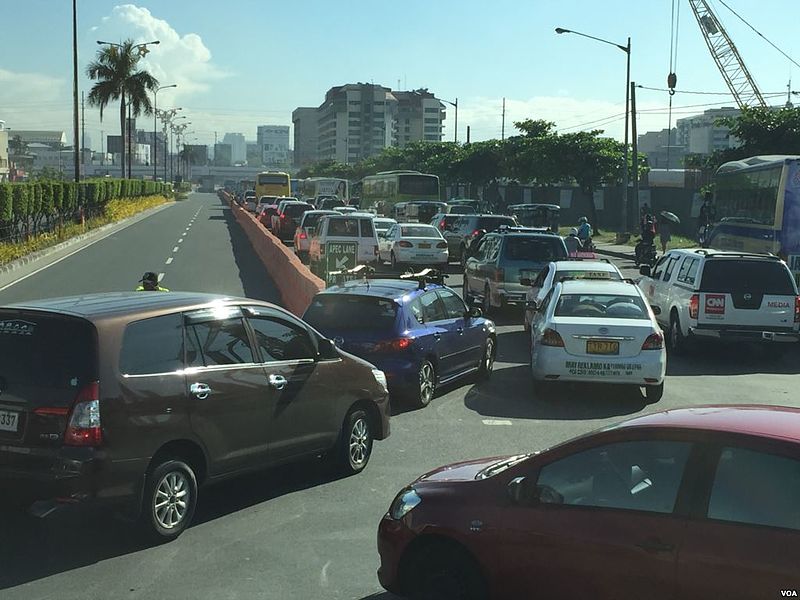
The Philippines and Singapore agreed today (Thursday, August 31) to work together on solving Manila’s traffic problems.
Under a memorandum of understanding signed by Transportation Secretary Arthur Tugade and Singapore Cooperation Enterprise (SCE) chief executive Kong Wy Mun, Singapore is offering to help the Philippines develop an “intelligent transport system” (ITS).
The system is designed to control traffic flow while monitoring congestion and traffic incidents.
Among measures being considered are congestion charging, similar to Singapore’s Electronic Road Pricing system. A crack down on illegal parking and bus lane enforcement are also being considered.
There are also proposals to centralise traffic and incident management. In this way road accidents could be detected early to minimise congestion.
Mr Kong said: “SCE will share Singapore’s journey in striving towards a sustainable land transport system through reduction in traffic volume, improvement in mobility and integrated land and transport planning.”
Mr Tugade said the ITS would be in a “basket of approaches” to solve the country’s traffic woes.
“It also underscores that we in the transport business in this country is not an enemy of technology,” he said.
Traffic solutions
The Japan International Cooperation Agency has estimated that congestion in the capital costs the Philippine economy 2.4 billion pesos in lost productivity every day. If unchecked, that number could rise to six billion pesos a day by 2030.
There are an estimated two million vehicles in Metro Manila. With a road network of about 1,100km, that translates to 2,000 vehicles per kilometre.
Every day about 11 million people use public transport. However, there are only 15,000 buses, 48,000 jeepneys, 27,000 taxis and a meagre 50km of rail.
By comparison, Seoul has 526km, Beijing 456km and Singapore 146km.
What rail there is currently carries about 1.5 million people per day. By 2030, it is estimated that 7.4 million could rely o rail transport.
The government has been considering a “bus rapid transit” system similar to Indonesia’s TransJakarta by next year.
Creating the east-west line would involve building 27.7km of dedicated bus lanes, stations and a card-based ticketing system.
Three hundred buses would ply the route, which is expected to cost 4.65 billion pesos. The system would be capable of carrying more than a quarter of a million people daily.
The World Bank has already lent $2.9 million to a pilot a similar system in Cebu. That scheme is expected to carry 330,000 people per day.

Comments are closed.